
The Free Press

Last month, we introduced a new series from The Free Press called Falling Back in Love with America. It follows the story of Andy and Keturah Hickman, newlyweds who, despite being deeply American, weren’t sure if America would be the best place to start a life together. In his inaugural essay, Andy wrote about the tiny hamlet in upstate New York where he came from, his years of hard-bitten traveling across the United States, the decline he witnessed, and why he is deciding to give his country another chance. Andy wrote about how he planned to roam the nation in search of “places that are still viable, still cooking, still moving and breathing and living.”
Today, I’m happy to present Andy’s second essay in the series, about his time in Beaver Island, Michigan—a beautiful, remote place in the Great Lakes with a history that verges on mythical. When he and Keturah arrived there, Andy told me that they’d seriously considered whether this might be the place for them to settle down. As you’ll read, that fantasy slowly came apart.
But this isn’t just the story of one island, it’s the story of this country. “I spend most of my time thinking about America and her glories, her downfalls, her landscape,” Andy wrote recently for his own Substack, “I find myself thinking a great deal about how to fix this old country of mine up.”
Next time you read an essay from Andy in these pages, we will, hopefully, have a new president-elect—and Andy talks with locals about the election below. But I’d encourage you to make a cup of coffee, and forget about the campaign for a moment. Instead, let Andy bring you into the strange, yet familiar, goings on in Beaver Island. —Suzy Weiss
A passel of Irishmen stood grinning on the decks of the M/V Emerald Isle, the 130-foot-long vessel thrusting us toward the port of Beaver Island in the noonday Great Lakes breeze. The boys from Galway cracked their pints and broke out their concertinas and banjos and fiddles to play old melodies from an older country. I leaned over the gunwales and stared off at the spraying sea, realizing I’d stumbled into what appeared to be a giant international family reunion.
Beaver Island, the largest in Lake Michigan, was settled by the Irish after the Great Famine of the mid-nineteenth century. Each year, distant cousins from the island’s Irish doppelgänger, Arranmore, gather for a féile, or “festival.”
It was only a two-hour maritime passage from the mainland, but it felt as if I’d ventured to some seldom-seen American analogue of the Falkland Islands or Newfoundland. I half-expected to hear murmurings of an uprising, or to be urged to taste a bit of newspaper-wrapped cod. Instead I heard a rousing rendition of “Oró, Sé Do Bheatha ’Bhaile,” which translates from the Gaelic to “Oh, ’Tis You Are Welcome Home.”
A middle-aged man from Illinois told me he had “not a drop” of Irish blood but that he comes to the annual féile for the music and the infamous revelry of these long-separated Irish cousins. He was planning to stay four days—then, he told me, “It’s back to reality.”
I’ve been drawn to Beaver Island precisely because the reality the man mentioned was never quite palatable to me. The world of turnpike tolls and paperwork, plastic-wrapped sandwiches and paper-jammed fax machines had never been the sort of world I’d ever cared for or fit well. If any older, purer iteration of reality might be tasted, it would be fair to assume that it’d still be thriving 30 nautical miles off the coast, in the land under swirling galaxies, self-appointed kings, and surreal isolation from the comings and goings of America’s more well-traveled paths.
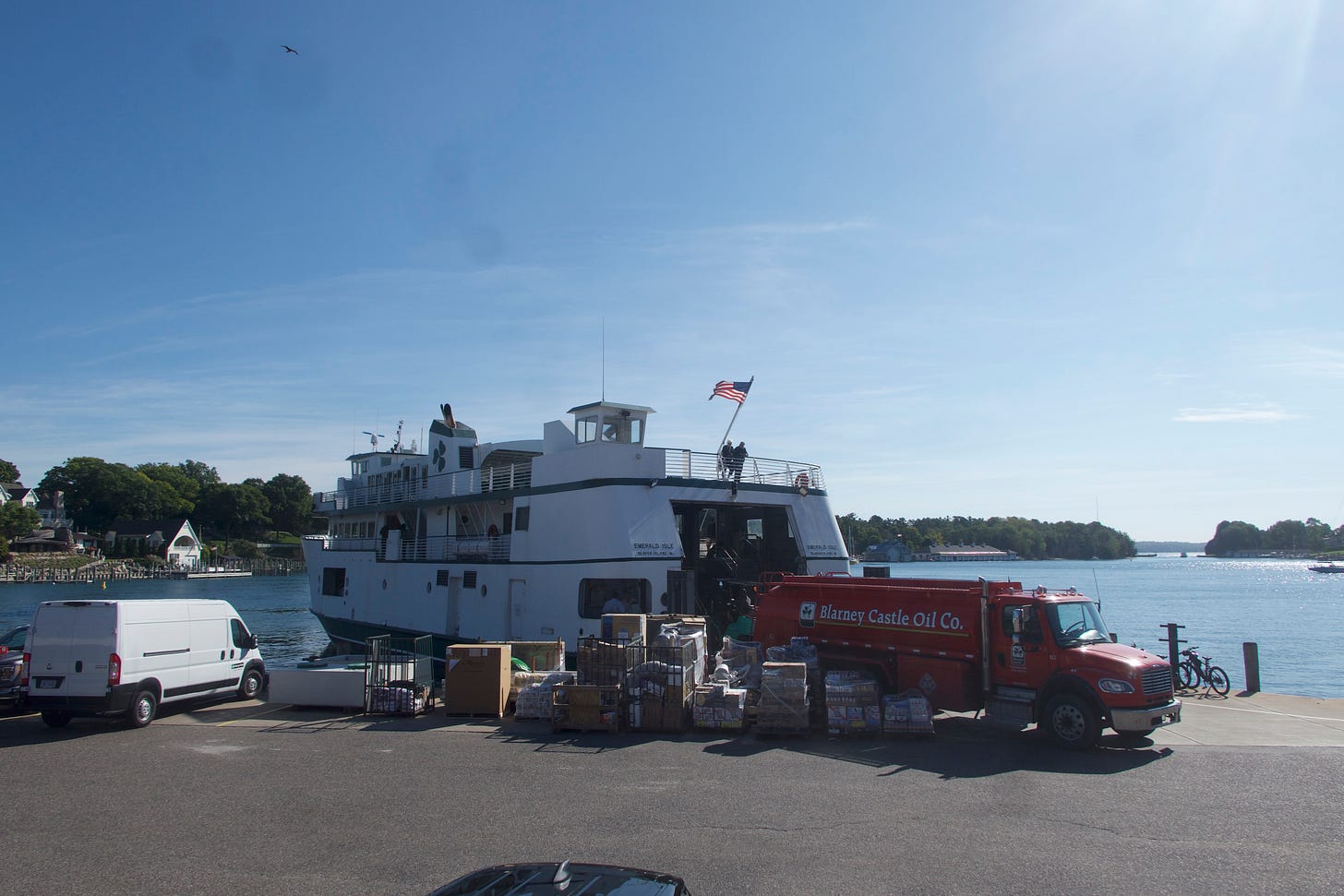
Beaver Island is about two-and-a-half times the size of Manhattan, and has a year-round population of about 600. Its sole connection to the outside world—to reality—seems to consist of two tiny airplanes and a fairly small ferry that only runs for seven months of the year. In the wintertime, when the lake freezes, the only way out or in is a 15-minute flight on one of the island’s tiny aircrafts. But often enough, foul weather off the lakes grounds the planes, leaving the residents entirely cut off from the outside world for days, or even weeks, on end.
That every item for sale in the island’s various shops must be shipped in from the mainland by freight was apparent in the price of practically everything. Groceries cost my wife and I nearly double, as did a six-pack of Labatt Blue—the Canadian beer you see more and more if you head north toward Canada in states like Michigan.
Our first evening, we wandered into a tavern to have another beer in the middle of nowhere.
There we met an old man—another Irish fellow—who was drinking Old Milwaukee and had lived on the island for nearly 70 years. His view of the mainland was dim indeed; he had complaints about everything from drugs to crime to traffic. He thought “communists” were driving the country off a cliff.
“What’s going on in this country now, it’s a disaster,” he declared.
I couldn’t disagree with him on the whole; disaster was what brought me to this far-flung locale to begin with. As I wrote in my introduction to this project of mine, I am afraid America has become a sprawling gigaplex of droning homogeneity, coast to coast.
Yet, leaving the tavern and staring up at the unpolluted night sky, I saw the Milky Way cloaked in her finest celestial robes, splayed out in the heavens in full color and three-dimensional depth. The Latin root of the word disaster is dis-astro—meaning “without the stars”—and the island boasts some of the darkest skies east of the Mississippi. To Beaver Islanders, the Milky Way is a nightly serenade to remind them that they live in a world where disaster is unknown in at least one respect, for they are never without the stars.
Except, of course, when it rains. As we returned to our camp, the Milky Way disappeared behind a scrim of black clouds, and a heavy rain set in. We fell asleep to the hypnotizing sound of giant raindrops against our tent, an island on an island, in the perfectly dark woods.
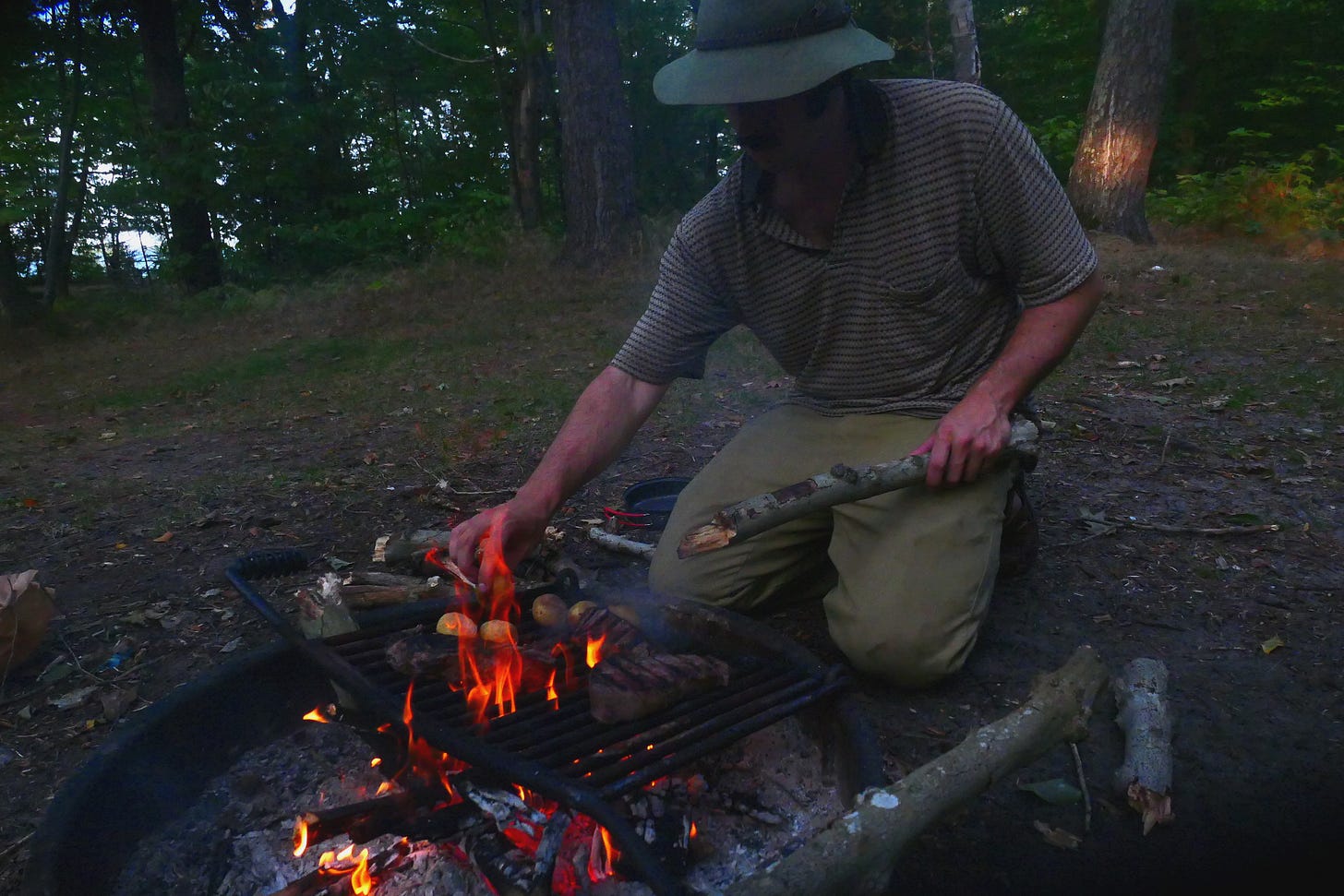
Our camp was as fine a camp as anyone could ask for nestled amid the hemlock and oak trees on a high, sandy bluff overlooking the shoreline, complete with a pit toilet and an iron fire ring. On the far horizon, a chain of uninhabited islands lay in bright-green repose out in the sandy shallows. The largest of them, Garden Island, is the site of one of the largest native burial sites in North America. Here, the bones of over 3,000 Ojibwa are buried.
Mornings led me to stand out along the bluff in the heavy rains, sipping coffee and surveying the bay below. I imagined the early settlers of this place, the most isolated, permanently inhabited island on all five Great Lakes. Such men must’ve been either intrepid, eccentric, foolish, or desperate. The gravity of the challenges this island presented in the mid-nineteenth century bred some of the fiercest, and strangest, expressions of the stripling American spirit one could ever hope to find.
Men like the first Irish Catholics to dock here. Men like the American king who arrived a few years later, James Jesse Strang.
In 1847 Strang, a schismatic Mormon, moved his followers to Beaver Island, and three years later, he declared himself the King of the Church of Jesus Christ of Latter-day Saints. With Mormon founder Joseph Smith having been martyred in Illinois only three years before he established his kingdom, Strang’s decision rose from a series of internecine conflicts within Mormonism. Strang’s answer was to decamp to Beaver Island with about 250 followers, where he enforced his own religious laws, collected taxes, and even put out a newspaper, the first one in Northern Michigan.
After his coronation, he’d take four wives. He reigned for nearly six years, boasting more than 5,000 subjects but, like many genuine American cranks, he eventually flew too close to the sun. When, in a bizarre and inexplicable show of his authority, he declared that the Mormon women of the island were to wear bloomers instead of skirts, the women refused, and he had their husbands publicly flogged. Two of the men swore revenge on King James—and in 1856, they shot him dead by a wharf in St. James Township, in clear view of the USS Michigan—about 20 yards from where we were camped.
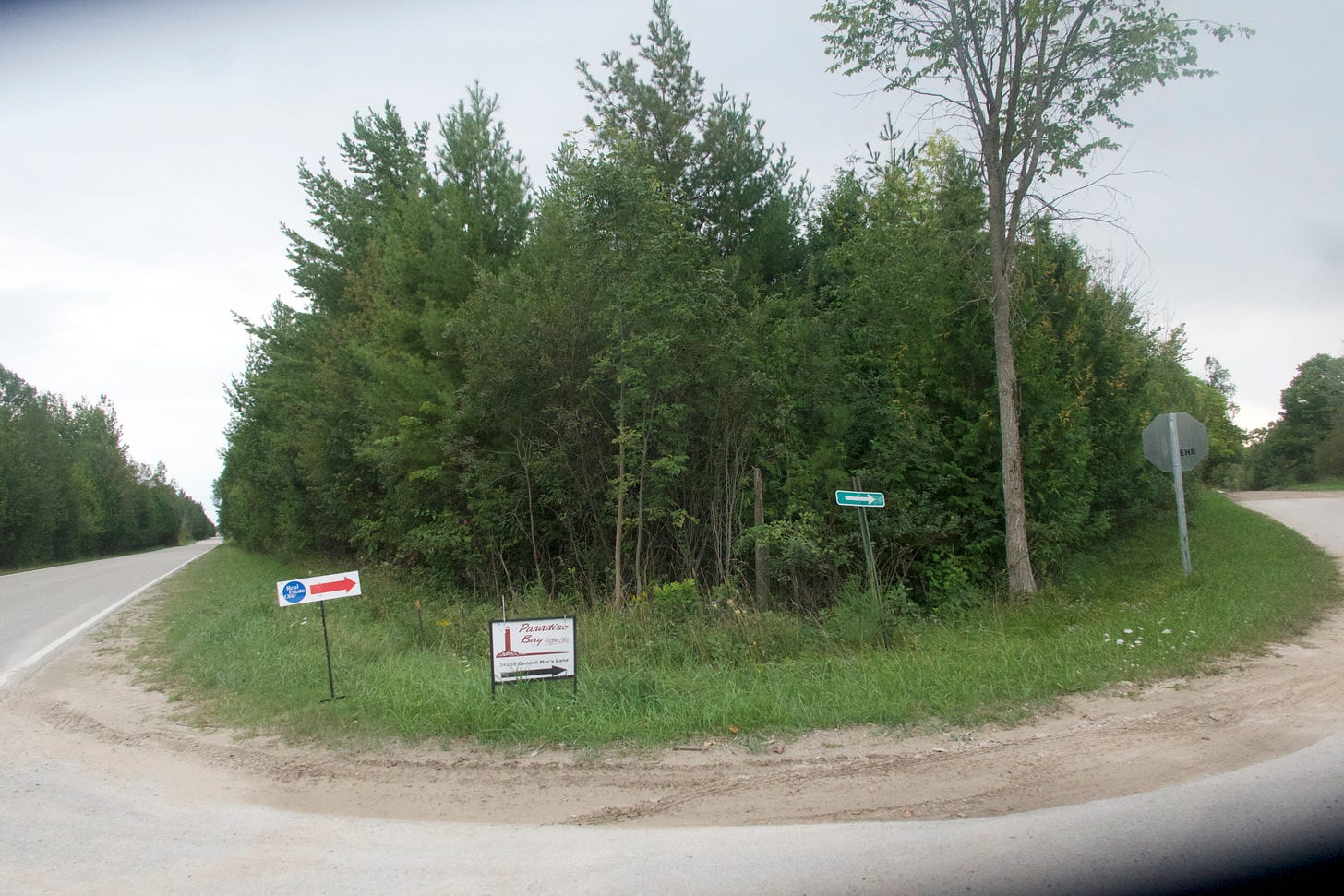
Sunday brought a trip to one of the island’s three churches—none of which were Mormon, much less Strangite.
The rain broke entirely by breakfast, so we pedaled our bicycles into the village and slipped into the wood-paneled pan-denominational Protestant church.
This church has no permanent pastor, minister, or preacher-man; sermons are given by a cast of rotating reverends: year-round islanders, seasonal residents, and visitors all come together to preach the Good Word, and this means, in the words of one congregant, “You never know what you're gonna get!” And after a long, confusing sermon involving at least seven books of the Bible, spouted off at the speed of an auctioneer, the morning’s service concluded—and curious members flocked around my wife and I, inquiring as to our purpose on their secluded isle.
As Keturah and I sipped lemonade and snacked on snickerdoodle cookies in the back of the sanctuary, a baritone-voiced man, by the name of Bill, offered to show us around.
How could we say no?
We piled into Bill and his wife Marilyn’s old Ford. The paved roads ended rather quickly, and we found ourselves jostling down Sloptown Road. “They called it that because King Strang kept his pigs down here—and you know where there’s pigs, there’s slop,” Bill informed us. I asked if he gets off the island much.
“I would only leave this island at gunpoint,” said Bill, who is in his 70s and has spent nearly half his life on Beaver Island. Marilyn beamed gingerly, amused at a turn of phrase he no doubt employs frequently and with great passion.
Inevitably, conversation turned toward the election.
“I suspect it’s likely there’ll be a civil war again on the mainland. When that happens, this is the place you want to be,” Bill said, listing off the supplies he had at his homestead for when that civil war breaks out: seven years worth of diesel fuel, wood heaters, solar panels, greenhouses. “We’ll be just fine over here no matter what. On the mainland? Well, that’s another question—especially if they steal the election again.”
By the time we reached the southern tip of the island—where a giant sandy bluff hosts a series of expensive-looking chateaus with commanding views of the open lake and giant glass walls—they both began to affirm that Keturah and I are “just the sort of people this island needs more of.” They told us the last young couple they’d met on the island promptly bought land and settled there, and implied that it might be nice if we considered doing the same.
With a median age of 64.5 on the island—the national median is 38.5—it seemed that Beaver Island could use some new blood. Everywhere we went, we were the youngest people there.
Bill went on to say that a “cheap” house on the island was now selling for a quarter-million dollars, and that the cost of new construction was running at an astonishing $600 per square foot. The building codes were strict, he told us, and “They WILL find you if you skirt them.”
Beaver Island may be isolated, but it’s not immune to the forces that I’ve seen play out in so many regions in rural America. “We don’t want to be another Mackinac Island,” a longtime island native told me later that week at the Beaver Island Community Center.
Contrasting Beaver Island with its not-so-distant cousin, Mackinac Island, would be akin to comparing Nantucket to rural Nova Scotia. Mackinac Island teems with luxury hotels, ritzy boardwalks, and elbow-to-elbow tourists with no-limit credit cards slipped into their spandex, while Beaver Island is a far-flung Hyperborea, a distant maritime haven of misty bluffs and billowing stardust. But the community is vulnerable, nevertheless.
Beaver Island, like Nova Scotia and all manner of not-so-touristy maritime backwaters—can no longer sustain itself from fishing alone. After the nineteenth century arrival of the invasive sea lamprey—a nasty, sharp-toothed eel without natural predators in the Great Lakes—the fisheries in Lake Michigan all but collapsed. Fishing has been a negligible source of income at best since the 1930s, and because of this, islands like Beaver Island have needed to chart another path forward.
When resource-based industries decline and die, the rural people whose bread those industries once buttered are often faced with a choice: death or tourism. The default is, of course, death; a story seen again and again through so much of rural America. The old mine is shut down, the oil wells have run dry, the farmers are selling out, and residents flee. Then: decay and rust, drugs and Dollar General—and, for those who choose to stay, a generation of disillusioned youth who move away as soon as they are able. What is left is only ruin.
Knowing this, when fishing died in Michigan, many scenic island towns understandably have chosen to leverage their last remaining asset: their beauty.
To sell the scenery is not hard at all; just invite vacationers to a haven where a simpler, quainter expression of American life still thrives. For as soon as such places are “discovered,” they are delighted to come in scores, with flip-flops on their feet and wallets in their hands.
And so, the old fish pound might be converted into a charming hotel; the local watering hole might opt to serve a full dinner menu. And the weathered fisherman, no longer in the business of catching whitefish by the thousands, might use his boat to take visitors on chartered fishing trips. Those who vacation there are delighted by the local charm, by the streets where people still wave and smile, by the bicycles left unlocked by the pristine beaches.
And at first, the turn towards tourism is wholesome enough.
But as time goes on, what began as a natural change from fishing to hosting vacationers grabs unstoppable momentum. Annual visitor counts spike year after year; the ferry records record-breaking traffic. Hotels are booked years in advance—and more and more of the old family estates are converted into second homes. Developers turn beaches into condo construction zones, and towns adopt well-intentioned measures to control the flow of new development. Meanwhile, real estate prices rise to astronomical levels as more and more Americans make their search for the “last best place.”
Beaver Island isn’t as far along in this sorry process as, say, Mackinac. But the warning signs are there.
As one sullen old local well into his cups told me at Beaver Island’s village tavern, “My kids can’t afford to stay here anymore.”
The jobs on offer are low-paid and seasonal; the wages to be earned simply can’t keep up with the prices for one of the few homes available on the island. Where places like Beaver Island might’ve nobly sought to avoid falling into a state of ruin, they find their children moving away nonetheless. In time, the locals begin to go elsewhere, too.
It was clear to us; Keturah and I would never be able to afford living on Beaver Island in spite of its many charms. If we’d come searching for an older, purer bastion of “original America,” we’d found it. But we’d also found that it is a commodity—in exceedingly short supply.
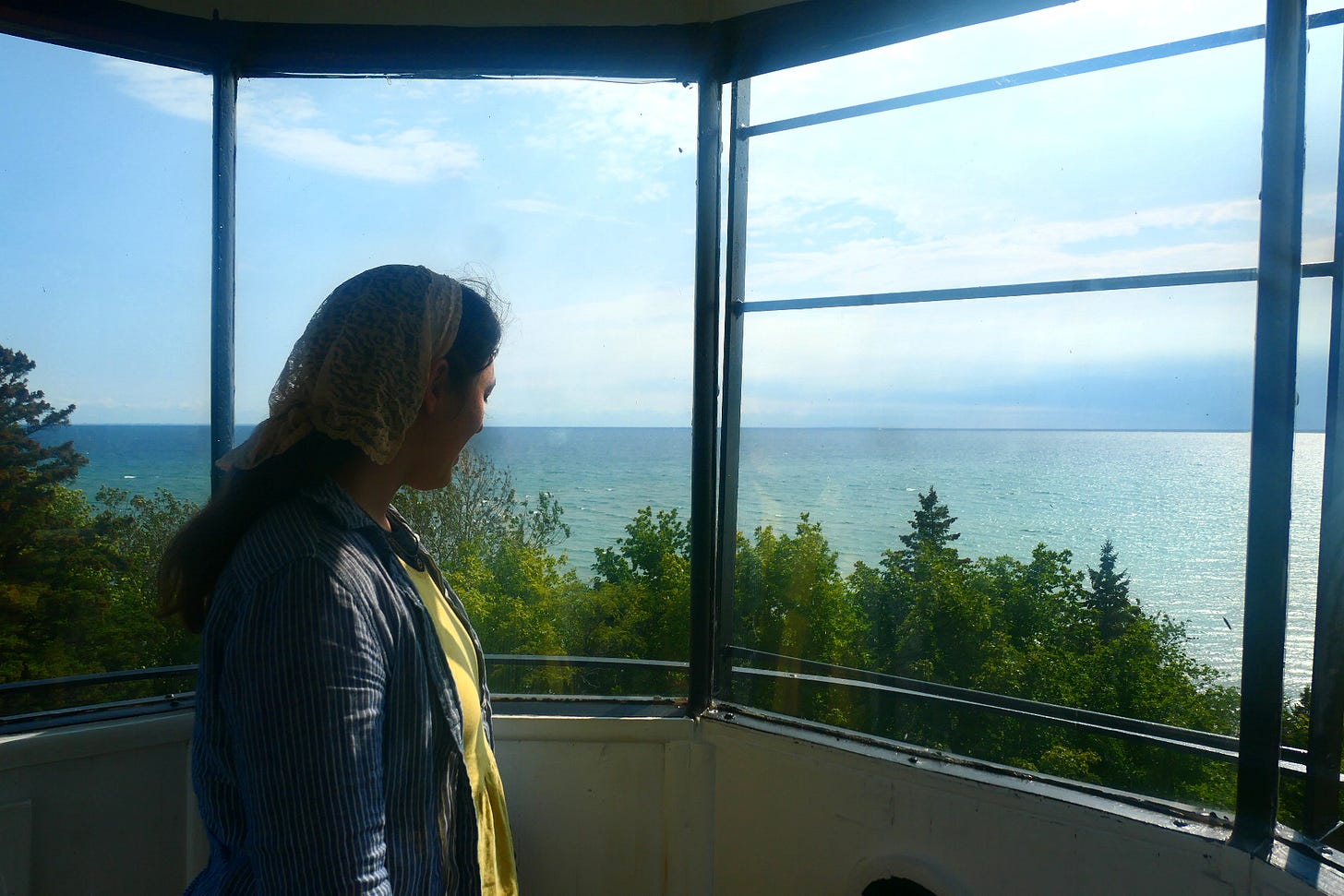
On our final night on the island, we met a man with a massive, mane-like white beard stained yellow by years of smoking. His response to my every question was evasive, and he was wildly drunk. “What do you really think of this island? What’s the thing these people here just don’t want me to know?” I asked.
He raised his eyebrows and responded in a surprisingly lucid tone. “This island is like any other fuckin’ town. It’s just harder to drive to. Same problems. Don’t let anyone fool ya.” Then, he pointed out the window, toward Saint James Bay.
“See that view?”
I said I did—and that it hardly looked different from the view in, say, Cheboygan, Michigan, on the mainland.
“Exactly. People come here thinking it’ll be so different. But it won’t. I promise you that. It’s just a town you can’t drive to, where a carton of eggs costs nine bucks.”
The bar was empty. The féile revelers had already been gone for weeks. The streets were strangely empty: devoid of the few tourists we’d seen when we arrived, light on seasonal residents, with the first wisps of autumn’s chill setting in. The Romanian temp workers on H-2B visas were heading home. We slept fitfully at the campground, packed our bags, and made for the ferry in the morning. The bay’s water was placid; mirror-flat.
“You’re lucky to have seen it,” an old man sitting next to me on the ferry said. “This place won’t be the same in 20 years’ time—that’s for sure.”
Follow A.M. Hickman on X @Shagbark_Hick and on his newsletter, Hickman’s Hinterlands.
To support The Free Press and our series “Falling in Love with America,” become a subscriber today:


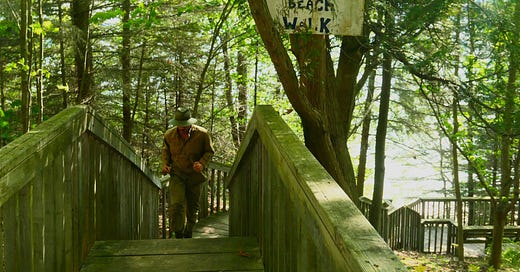











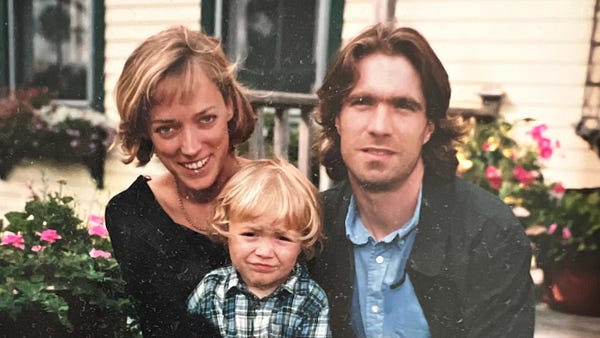

I visited Beaver Island and some of the nearby uninhabited islands many years ago on a camping trip that used a 34-foot-long, 16-passenger canoe, a replica of the Voyageur canoes used by 17th century explorers. It was a delight to be so disconnected from the ordinary world.
Those who want to learn more about Strang's kingdom can read "A Child of the Sea," available for free at Project Gutenberg: https://www.gutenberg.org/files/34769/34769-h/34769-h.htm.
Though the style and goals of this series seem sort of pretentious, I do enjoy reading it. Mainly because I have a life goal of being the “local drunk guy I talked to in bar who said something lucid and clever” - I’m a native in a place inundated with transplants and tourists do occasionally dispense wisdom to them, sometimes better received than others.